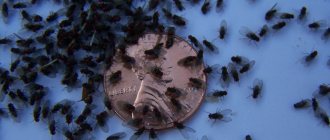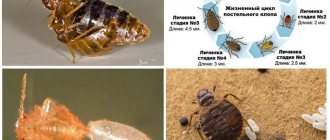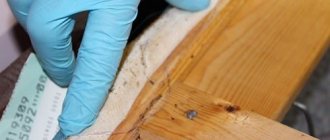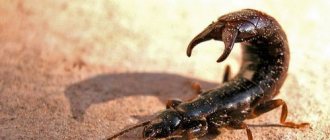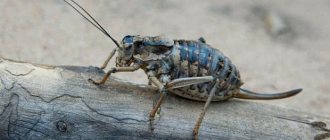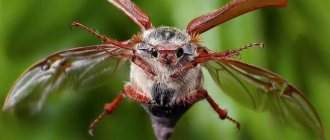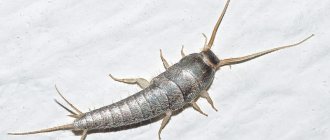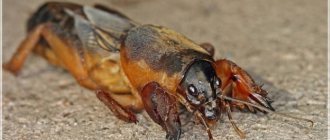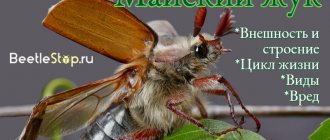Centipedes are a species of small centipedes that often live in residential buildings, causing people to be shocked and confused by their appearance. This is unpleasant, such an insect causes much more disgust and disgust than even cockroaches. Of course, it is very difficult to find a person who can live under the same roof with such a pest. Therefore, anyone who is faced with this situation will sooner or later wonder how to get rid of centipedes in the house. We will provide detailed information about this in our article.
general description
Externally, scolopendra looks like a worm, which has many limbs. Some people call these insects centipedes, but it should be understood that they are completely different types of insects. The first pair of legs of a centipede performs the function of claws, which the individual uses to capture prey. The limbs have spines soaked in poison. The length of one individual can be up to 10 cm, for example, the Crimean centipede has this size. How to get rid of this insect in the house?
Before answering the question, you should pay attention to the fact that centipedes love to live in damp and warm places, from which they go in search of food only at nightfall. In the wild, these insects live in piles of fallen leaves, construction debris and other similar places. Creeping individuals also look for the same shelters in living quarters; most often they settle in the bathroom, kitchen or toilet. Scolopendras get there through open windows and doors, as well as through cracks and crevices in sewer and ventilation systems.
Don't make mistakes!
Quite a lot of people, when they discover scolopendra, try to get rid of it in ways that in practice do not bring any results, and sometimes can even be harmful. These include:
- Attempts to “kill” the centipede with improvised means - neither a newspaper nor a slipper are capable of killing the centipede. This is due to the fact that its body is covered with a very dense shell, which reliably protects adult individuals from such attacks. In addition, she is quite nimble and moves quickly, so it will most likely not be possible to make a targeted strike.
- Using aerosols against crawling insects. Since this centipede is not an insect, it is simply useless to use the above remedies against it. Moreover, it is much larger in size than insects, and therefore the concentration of toxic substances must be quite high, which such drugs cannot provide. In addition, centipedes run very quickly, and therefore long-term spraying is almost impossible.
- Using sticky traps. Here again the impressive size of the centipedes will interfere. Plus, even if an individual gets stuck and loses several legs in trying to get out, it will escape without much difficulty, and the limbs will soon grow back.
- Attempts to catch it with your hands, a jar, a bag, etc. This is absolutely impossible to do, since if there is danger, the numerous walking limbs of this creature become poisonous.
What attracts scolopendra?
Speaking about how to get rid of scolopendra in the house, you should also figure out what exactly attracts these insects. Thanks to this, you can avoid such a problem in the future. The following conditions are favorable for the appearance of centipedes in a residential area:
- Excessive indoor humidity. This is the most important factor in the appearance of scolopendra in the house.
- Availability of food. This should include other domestic insects that live in living quarters.
- Comfortable air temperature for scolopendra living.
Scolopendras at the dacha
Natalya N. asks us the following question: “At our dacha in Crimea, centipedes appear every summer. How to get rid of these insects once and for all?”
Let's recognize the enemy by sight
Scolopendra, which looks like a giant worm with legs, prefers to live in the tropics, only occasionally settling in temperate climates. 90 species of these labiopods ranging in size from 10 to 30 cm crawl across the planet.
In Crimea, the ringed scolopendra is “registered” - it loves twilight and high humidity. During the day it sits out under trees and stones, and at night it goes hunting.
The Crimean centipede's food consists of insects, larvae and even mollusks, which it insidiously “embraces” with its front legs and then bites into with venom with its jaws.
The Crimean scolopendra does not feel much discomfort in the company of people: it scares tourists and visits summer residents. These creatures are characterized by increased toxicity in autumn and spring.
The Crimean venom is not fatal, but bites should still be avoided: they are painful and have a negative effect on the entire body. The person bitten suffers from flu-like symptoms for a couple of days: fever and chills.
If you are a victim of centipede, try to find a medical professional who can help you professionally. As a preventive measure, take an antihistamine and lubricate the burn (bite) with a strong alcohol solution.
Knowledgeable people assure that the surest remedy for scolopendra in the house is its fundamental drying. They do not live where it is dry.
What else can be done to get rid of this scourge:
- Call a team of exterminators. They have a powerful gas in their arsenal to flush out such uninvited guests.
- Use Dichlorvos, which will help for a while, but household members may also suffer from this aerosol.
- RAID from flying insects, oddly enough, has a detrimental effect on scolopendra.
- A lone centipede can simply be politely “deported” from the borders of your property. Pry it with any suitable object (scoop, cardboard, newspaper) and carefully remove it from your home.
- Tightly caulk all the cracks in the dacha (in the apartment), once and for all depriving the centipedes of the opportunity to freely ply along the street-house route.
Experienced fighters against scolopendras advise getting a cat: it will either eat the insect that bothers you, or with its meows it will warn you in time about the impending danger.
Preventive actions
In order to never wonder about how to get rid of scolopendra in the house, it is necessary to take preventive measures.
- Fighting moisture. The fact is that centipedes are very afraid of lack of humidity. Drying the room is considered the most global and simplest method, since where it is dry, light and clean, insects will not grow. That is why it is necessary to regularly ventilate your apartment. You should also eliminate all plumbing breakdowns and stagnant moisture under the bathtub or sink.
- Insulation. Another important rule is to seal small gaps, cracks, cracks, and voids through which centipedes can enter the house.
- Window protection. It is best to protect windows with mosquito nets. After all, they are most often the main route for insects to enter the house.
- Fight against other domestic insects, which include ants, fleas, cockroaches, as they act as food for scolopendra.
Cleaning the area around the house from various deposits of debris, as well as from fallen leaves, which can serve as a shelter for centipedes.
What treatment can be applied at home?
After washing the affected area with water or alcohol, apply a sterile bandage. To reduce pain, use an ice compress and take an analgesic. The patient needs rest, it is advisable to drink plenty of fluids to help remove toxins from the body. It would be a good idea to take allergy medications.
Do not panic when meeting a centipede; the small centipede will try to quickly hide from a person. Also, do not act carelessly and pick it up. It is difficult to predict the animal’s reaction; if it panics, it will definitely bite. Remember that the centipede's venom is not fatal, but the bite site will turn red and hurt for several hours.
How to get rid of scolopendra in the house?
There is no need to try to get rid of an unpleasant insect using a slipper or other improvised means. This is quite difficult to do, because the body of the centipede is covered with a very dense shell. It is also necessary to take into account the evasiveness of the insect, which makes it very difficult to hit it.
How to get rid of scolopendra in a private house? The fastest way would be to catch it with your hands, a dustpan or brush, and then take it outside, away from your home. This method is only relevant if you notice only one pest in your home. But how to get rid of scolopendras in an apartment if there are many of them? To do this, you should use the most effective and proven methods.
What is the danger to humans?
The appearance of the scolopendra is rather unsightly: long legs, a segmented chitinous skeleton. When they appear in the house, many residents begin to get scared and try to quickly take the first object they come across, such as a fly swatter, in order to kill or scare away the predator.
In fact, domestic scolopendras do not pose a particular threat to humans and, of course, will not lead to mortal danger. Although they can bite if you hold them in your hands for a long time or accidentally step on them.
Cruciferous flea beetle in the garden: 4 safe ways to control the pest
Of course, it’s not pleasant, because the bite resembles a wasp sting. It also causes redness, burning, pain, and swelling of the skin. But domestic centipedes are not carriers of dangerous diseases and are even shy themselves. When they see a person, they try to quickly go into the shadows and hide. Centipedes do not live in things or food. When the lights are turned on they usually go away quickly.
There are certain types of these centipedes, for example, giant centipedes, whose bite is more dangerous to humans. Domestic species are safe, although bites should be avoided, especially for people with weakened immune systems or excessive allergies.
Attention! If you follow the scale of pain, a scolopendra bite can be 20 times more painful than, for example, a bee sting.
Chemicals
How to get rid of scolopendra in a private house or apartment? Chemical agents are considered the most effective in the fight against insects. Most often, broad-spectrum drugs are used, which are designed to destroy various harmful insects. This should include:
- "Medilis Cyper".
- "Dichlorvos".
- "Raid".
- Starex.
- Henkel Kombat.
Before getting rid of scolopendra using insecticidal preparations, you need to put on personal protective equipment: rubber gloves, a respirator, and the most closed clothing possible.
Is the domestic scolopendra dangerous for humans?
The house scolopendra, or common flycatcher, is often found in private houses and cottages, but you can also find it in a city apartment.
Due to its terrifying appearance, high speed of movement and, sometimes, sudden appearance, this insect often inspires horror and fear in residents of houses and apartments.
https://youtube.com/watch?v=YNWhej_5Ai4
The domestic scolopendra is a fairly peaceful insect and not dangerous to humans.
Structure and appearance
An adult specimen of the house scolopendra can reach 60 mm in length. Its body is yellowish-gray or brown with three reddish-violet or bluish stripes on its back. On the head there are compound eyes and long, thin mustaches, which provide the scolopendra with excellent vision and a sense of vibration.
The body is divided into 15 segments, each of which has one pair of legs, which is why the centipede is sometimes called a centipede or centipede.
The hind legs are very long, similar to whiskers; because of this feature, it is sometimes difficult to determine where the insect begins and where the end is.
Insect lifestyle
House centipedes are predators; they are excellent hunters and eat other domestic insects such as spiders, cockroaches, bedbugs and flies, which is why they are nicknamed flycatchers. In nature, these insects actively hunt both during the day and at night, but in an apartment they prefer the dark for hunting.
The flycatcher sits motionless on the wall or ceiling, guarding an unwary victim. Having caught her, the scolopendra inflicts a fatal poisonous bite on her and then slowly eats her. At the same time, the centipede is capable of catching several insects at once, which it will eat in turn, firmly holding the caught prey in its paws.
Despite the fact that the scolopendra is poisonous, it is not dangerous to people; its poison is very weak to cause significant harm to humans. They bite only in case of self-defense, and human skin is too thick for them to bite through.
Centipedes are native to the Middle East, Southern Europe and North Africa; they are found in southern Russia, Kazakhstan and Moldova.
These are heat-loving insects that prefer a humid climate. In nature, centipedes live in fallen leaves under trees, but in houses they also prefer wet rooms - baths, basements and toilets. During the cold season, even when indoors, scolopendras hide in secluded places and do not show much activity.
Measures to control house centipedes
Many conventional methods of controlling domestic insects are not suitable for centipedes, due to the peculiarities of their structure and life. Standard adhesive tapes will not hold the centipede; it will tear off the stuck legs and run away, and new ones will soon grow in their place. Various baits also have no effect on them, since they feed exclusively on live insects.
But there are still ways to get rid of these insects in the house:
- You should carry out a general cleaning of the area near the house: remove all old leaves, grass, climbing plants from the walls, this way the scolopendra will lose its shelters, which will reduce the likelihood of its appearance in the home;
- a small number of centipedes usually appear in a house or apartment, so you can simply kill or catch them all, thus ridding the house of their presence;
- flycatchers usually settle where there is a lot of food for them, so by getting rid of other insects in the house, you can automatically get rid of centipedes; they will go to other places in search of food;
- since centipedes are moisture-loving insects, you need to monitor the humidity in your home, by cleaning and drying basements and underground spaces, you can create an unsuitable climate for flycatchers, and they will leave to look for more humid places;
- centipedes do not enter houses through doors, but by crawling into all sorts of cracks and cracks, so you need to carefully seal holes in floors and baseboards, putty cracks along windows and doors, and cover ventilation holes with mosquito nets;
- the use of poisons is only suitable as a last resort, when other methods of control do not help, while chemical toxic substances for insects are used to treat premises.
In some places this insect is an endangered species and is listed in the Red Book.
Traditional methods
You can also fight the pest using folk remedies. For these purposes, some people take the well-known boric acid, which is used in the fight against many household insects. However, it is worth paying attention to the fact that scolopendra is considered a predator, so it cannot be said with certainty that boron powder will attract its attention. If scolopendra gets into the apartment through the ventilation, then the grate must be treated with boric acid.
Another unusual folk method of fighting insects is the preparation of food baits based on chemicals. For example, if you have Prussians at home, you can make balls to kill cockroaches. When a scolopendra eats poisoned food, it itself will die.
The most famous ways to combat woodlice
It is possible to get rid of wood lice using solutions prepared at home or using preparations that are sold in specialized stores of household and agricultural chemicals
But we must remember that if you use chemicals, you must adhere to the strictest precautions and safety measures, and if you have small children and pets, increase these measures
Solutions at home
Let's look at some of them that have proven to be the most effective and popular for controlling woodlice. Their effectiveness is slightly less than that of chemical agents, but they are not so dangerous to others. As practice has shown, after two treatments, woodlice disappear completely.
- Bread kvass. You can take ready-made kvass, which is available in almost every home during the hot season, or dilute dry, store-bought kvass in a proportion of ½ boiling water. Spray the mixture or kvass into the areas where wood lice are found.
- Salt (table salt), hot pepper with the addition of tobacco. Take salt - 3 g, ground hot pepper - 3 g, powdered tobacco - 3 g, dissolve it all in one liter of water. We wet the surfaces of the largest accumulation of woodlice with the solution. Eight hours after treatment, thoroughly wash the surfaces with a chlorine solution.
- Bleach solution. We prepare a solution in a ratio of 40-50 g of bleach per liter of water, you can also use hypochlorite in a ratio of ½ to water. We disperse them into woodlice habitats. Since chlorine is a very caustic substance, it is necessary to take all measures to protect the organs of vision, breathing and carry out processing using protective gloves. Do not allow children and animals into treated areas. Three hours after treatment, thoroughly ventilate the premises until the smell of chlorine completely disappears.
- Boric acid. We take boric acid powder and scatter it at the places where the pest appears.
Specialized pest control organizations mainly use chemicals. But by doing this, they do not remove the main factors due to which woodlice appeared, and this is increased humidity and the presence of organic residues, and rest assured, woodlice will appear, again occupying the free territory, creating a new colony.
And in the end, I would like to say that the main actions to completely in residential premises is to detect the initial places of high humidity in the area of the apartment or house, and only then, using the above methods and means, to destroy the pests. To prevent their reappearance, it is best to use table salt, making salt barriers out of it, before entering living quarters.
Specialized services
If there are a large number of scolopendras in your living space, then it is best to seek help from a specialized service, which employs employees who use professional means to solve this problem. It should be noted that this method of insect control is the most effective at the moment. However, this service costs a lot of money.
Characteristic features of scolopendra
The very name of this species sounds somewhat exotic for a resident of central Russia. But for the southern regions, especially the Crimea and the Caucasus, centipedes are more than familiar creatures. Although occasionally heat-loving centipedes are still “carried” to northern latitudes and they suddenly show up, for example, in Moscow apartments.
Externally, scolopendra resembles a large dark brown worm with many legs. Millipedes 10-15 cm long usually live in houses and apartments, but in hot countries you can also find a particularly large individual up to 30 cm long.
The peak activity of these insects occurs at night, and during the day they prefer to sit out in some dark, secluded place. But their main feature is their love for warm rooms with high humidity. Frequent places where scolopendras accumulate are:
- bathroom;
- toilet;
- kitchen (especially the area under the sink);
- cellars and any basements;
- attics.
Most often, centipedes are found in private houses, but apartment owners are also not protected from them: insects can easily get into the apartment from the basement. They also often sneak into summer houses and tourist tents.
Is scolopendra dangerous?
Getting rid of scolopendra is not as easy as we would like - the flat shape of the body and the durable chitinous shell do not allow you to simply “slam” this insect with the first object you come across. Meanwhile, it brings a lot of concern to residents of the southern regions.
Scolopendras are by no means harmless - a frightened insect secretes very toxic, scalding mucus from its front legs. In normal times, the poison helps these predators hunt other insects, lizards and even small rodents.
The “bite” of the Crimean scolopendra does not pose a great threat to humans, but can knock one out of the usual rhythm of life for several days. The poison causes an increase in temperature to 39°C, and swelling forms at the site where it enters the skin, accompanied by severe pain and itching. These symptoms usually last for 48 hours and then subside. But still, in other cases, it is advisable to consult a doctor, since some people have a hard time tolerating the scolopendra venom. These include:
- Small children;
- allergy sufferers;
- people with heart disease.
Scolopendras are shy and not aggressive, so they will not sting a person without reason. But if you step on an insect or touch it with your hand, it will involuntarily release poison. By the way, traces of this mucus from different surfaces should only be washed off while wearing gloves.
Precautionary measures
To avoid being bitten by this insect, you need to carefully inspect your bed before going to bed. You should pay attention to the fact that small centipedes can hide even in clothes, so you need to shake things out each time before putting them on.
As mentioned earlier, if you use chemicals yourself, you must use personal protective equipment. After you kill the insects, you should also ventilate the living space and wipe the surfaces in the house with a damp cloth.
What to do if you are bitten?
The centipede rarely attacks itself, but if this happens, you need to know what to do if it bites.
- First, you need to thoroughly wash the bite site with soap (preferably household soap), and then treat it with alcohol.
- Apply a sterile bandage.
- Rest more and drink fluids so that the poison leaves the body faster.
- Contact your doctor.
Under no circumstances should you drink alcohol. It speeds up the metabolism, which causes the poison to spread faster throughout the body, which leads to a worsening of the condition.
Symptoms
The main symptoms after a scolopendra bite are as follows:
- swelling and redness at the site of the bite;
- pain (can be compared to a hornet sting);
- increased temperature (sometimes up to 39 degrees);
- itching;
- general intoxication of the body.
Important! Symptoms may persist for 1-2 days, so it is important to monitor the condition and consult a doctor if necessary.
In most cases, scolopendra venom is not fatal. This is only possible if a person is allergic to some component of the poison or has cardiovascular diseases. However, symptoms can usually be relieved if you go to the hospital in a timely manner.
It is worth noting that domestic scolopendras (flycatchers) do not cause such symptoms. If they sting, only slight redness and a burning sensation may appear at the site of the lesion.
Female centipedes are more poisonous than males. Moreover, they are more active and aggressive, so they attack more often.
How to protect yourself from scolopendra?
Most often, scolopendras attack people in nature, climbing into tents and getting into clothes. Therefore, it is very important to know how to protect yourself from scolopendra in the fresh air.
- Close your tent carefully and check for insects before climbing into it.
- Carefully inspect clothing and shoes.
- Do not go outdoors in the dark.
- Carefully lift branches and stones.
If a scolopendra bites a child or a pregnant woman, you should definitely consult a doctor!
What should you not do after being bitten?
There are some things you should not do after being bitten by a scolopendra. The most important thing is that you should not cut the bite site in the hope of getting rid of the poison. Also, do not apply a tourniquet, as this will lead to stagnation of blood and even greater problems. Do not try to catch up and kill the scolopendra.
Why do insects appear in the bathroom?
The main reason for the appearance of these creatures in the toilet and bathroom is high humidity. There is an increased risk of insects in apartments where major renovations have not been carried out for a long time, plumbing leaks and there are cracks in dark corners. However, these centipedes do not only start from dampness.
Both long and small centipedes love high air temperatures. Failure to comply with sanitation rules is often enough for bugs to appear. An overflowing trash can attracts silverfish. Favorable conditions for this living creature are created by poor ventilation in the house.
Silver and white silverfish
It is difficult to get a good look at a living silverfish, because... it moves quickly, but in the photo you can see the body structure of these creatures. Both white and silver silverfish are found in human homes. These varieties differ only in color. Some insects have a dark gray or black carapace, but have a shiny silver coating on top.
The structure of silverfish.
Other varieties of silverfish have a transparent white shell. It also has a silvery patina.
Adults look like tadpoles. The head is large and the tail is thin. There are long mustaches on the head. These creatures have 4 pairs of main legs and 8 pairs of auxiliary legs. Thanks to the special structure of their limbs, silverfish crawl quickly both along the floor and along the walls.
The favorite habitats of these insects are:
- far corners under the bathtub;
- places where condensation accumulates;
- hidden communications;
- jars of detergents;
- wet towels, mats and sponges.
These places have something in common - high humidity. Here, adult individuals live and also lay eggs, from which not too long white worms emerge. They look like thin caterpillars. They cannot run fast, so they are most often found in places where wet, caked clothes or towels have been left for a long time, as well as in the far corners of the bathroom, where cleaning is not done often.
Insects feed on organic matter . They consume mold, mucus, toilet paper, food scraps, natural fabrics, wallpaper paste, etc. Thus, these creatures can find enough food in the bathroom.
Reasons for appearance
This insect, like many others, prefers places with high humidity. As a rule, they appear in basements, where it is damp and warm, and there is enough food for the flycatcher. Gradually, flycatchers move into residents’ apartments in search of food and comfortable conditions for their existence.
The flycatcher is mainly attracted by the abundance of food. Its diet includes flies, cockroaches, bedbugs, fleas, moths and other small insects, which is why this creature is popularly called a flycatcher.
Benefits and harms
In fact, it is a useful creature that helps humans destroy many harmful insects and parasites.
Unfortunately, its frightening appearance frightens a person, and such proximity in the home is useless.
The insect's appearance creates panic in all residents, which leads to disturbances in a stable mental state, and this leads to the fact that a person cannot relax fully after a hard day. In addition, children and adults, especially women, are afraid to get up at night for natural needs. Sleep is lost because people think that the flycatcher can climb into the bed or fall from above. In fact, these are just phobias, not supported by anything.
